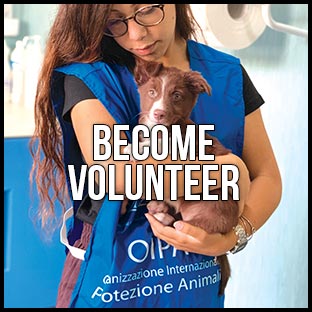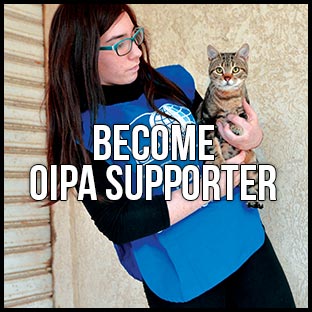

Animal testing regarding cosmetics (including shampoos, soaps, shower gel and so on) and cleaning powders in general is pretty complicated. These products are made of many different chemicals mixed together to obtain the finished product. The company that makes the substances and the one that studies, tests, products and puts it into the market are often different ones.
Regardless of their future utilisation, all the new chemical substances are tested with generic tests on animals, like the LD50 (see glossary), and are then tested again with more specific tests, like the Draize (see glossary) for cosmetics, according to their future applications.
The vast majority of the finished products is not tested on animals because it’s not necessary by law and companies usually don’t want to waste money for tests that they know to be of no scientific value.
Some big multinationals are an exception, (e.g. Procter & Gamble), and they test also the finished products claiming to guarantee more safety for their consumers. The truth is that they perform tests just to have more data on the toxicity of their goods, in case of trials with their customers.
1976 is an important date for animal testing, this is the year when the Positive List has been written. It is an inventory of all the substances considered safe until then. From 1976 on, all the substances not belonging to the list had to be tested on animals by law, in order to provide a toxicological profile to the authorities, which encompassed tests like LD50, Draize Skin test, Draize Eye test and many more like phototoxicity, carcinogenicity and so on. Some of these are specific for cosmetics, like the Draize test. Some others are more general and used for all the chemicals regardless of their application. All these tests involve terrible sufferings for the animals, but the chemical and cosmetics companies never moved a finger to modify these pointless norms, at least until the public opinion started to realise what was happening in the labs.
Some companies decided not to participate to this animal slaughter and choose not to increase the number of animals sacrificed for the sake of economic interests. These companies decided to use only the substances of the Positive List, not to perform any tests on animals and not to have them done by third parties.
Deodorant
Almay, Avon, Lady Mitchum, Mitchum, Tom’s of Maine
Fragrance
Aramis, Avon, Bath & Body Works, Beautiful, Chanel, Charlie, Crabtree & Evelyn, Garden Botanika, Liz Claiborne, Tommy, Tommy Girl, Victoria’s Secret, White Linen, Lush
Hair Care
Aveda, Bath & Body Works, Body Shop, Citré Shine, Flex, Jheri Redding, John Paul Mitchell Systems, Revlon, Sebastian, Wella, Lush
Hygiene
Natracare, Seventh Generation
Laundry and Cleaning
Bon Ami, Ecover, Seventh Generation, Sun, Oral Care, Tom’s of Maine, Nature’s Gate
Paper Products
Marcal, Seventh Generation
Skin Care
Almay, Aubrey Organics, Avon, Basis, Bobbi Brown, Body Shop, Clinique, Estée Lauder, Jane, M.A.C., Origins, Revlon, Ultima II, Lush
Soap
Basis, Bath & Body Works, Body Shop, Garden Botanika, San Francisco Soap Company, Lush
Laundry and cleaning
The case is the same as with the cosmetics: there’s no need to test the finished product but just the toxicity of the single ingredients. Specific experiments like the Draize test are not generally done, but LD50 or carcinogenicity tests are widely used.
We can’t ignore the environmental impact of the cleaning powders, whose phosphates, cationic tensioactives and chlorine bleaches pollute the sea and soils.
It’s worth to highlight that the law that will abolish animal tests for cosmetics won’t necessary abolish tests for the generic toxicity (e.g.LD50).
GLOSSARY
LD50: toxicity test of a chemical substance; groups of lab animals are forced to ingest chemicals in increasing amounts until half of them dies. The animals are often force fed by a tube inserted down the esophagus into the stomach.
Draize Eye Test: In this test, conscious rabbits are immobilised while chemicals are put directly into their eyes, inspecting the resulting injuries to the eyes after several days. Since rabbits hardly have any tears they can’t get rid of the chemical in the eye, facilitating the researcher’s work. This test claims to evaluate how much a substance can damage human eye tissues.
Draize Skin Test: evaluation method of the irritative potential of a given substance for the human skin. The test is typically conducted by placing a chemical or chemical mixture on the skins of animals, usually rabbits and guinea pigs. The skin is often prepared by removing layers of skin to cause abrasions.
Carcinogenicity Test: this test wants to reveal whether a chemical provokes cancer or not (in the animals that are tested, not for man obviously). Rodents are the most common candidates, and they are force to eat or inhale a chemical up until various years. The animals are then killed and an autoptical examination will state if there’s any cancer in their tissues.
A bad example: Procter & Gamble
Procter & Gamble sells dozens of products in different market fields. This is a list of these products with the alternatives you can use instead. click here


Buy only products from the positive list.
Unfortunately, even nearly all the ingredients of the Positive List have been tested on animals, even if it wasn’t necessary by law.
There’s nevertheless a very good reason to buy products containing just these ingredients: make the producers and politicians understand that we OPPOSE to this shameful legislative situation, in order to abolish these laws and decrees that impose animal testing. This approach has proved to be working so far: the pressures of the public opinion on governments and producers are sorting the desired effect. In Britain for example, no company conducts these test anymore, and we have to work in order to make this happen world-wide.
Just keep in mind that “finished product not tested on animals” or similar writings don’t mean anything interesting, since what counts are the ingredients.
Concerning washing powders, the only solution is using the choice we have as consumers: buy products of the companies that use biodegradable components (less harmful for air, water and soil) AND that decided NOT to use ingredients obtained through animal killings, and NOT to experiment on them the finished product.
The writing “not tested on animals” doesn’t mean anything in this case as well.
DONATE TO OIPA AGAINST COSMETICS

BANK TRANSFER
Write note “DONATION TO OIPA” and the exact amount
Bank Account: OIPA – Organizzazione Internazionale Protezione Animali – ONLUS
Bank Name and Address: Banca Intesa San Paolo – Agency MILAN-BOCCHETTO – Via Bocchetto 13/15 – 20123 Milan (Italy)
Bank details:
IBAN Code: IT93I0306909620100000002326
SWIFT Code: BCITITMM
Bank Account Number: 100000002326

CREDIT CARD OR PAYPAL
Write as reference “DONATION TO OIPA” and the amount






